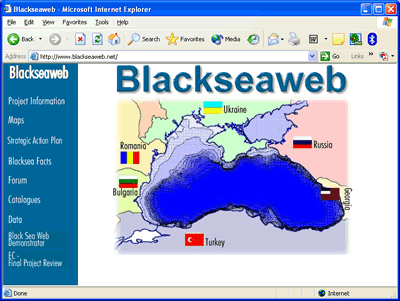|
|||||||||
Knowledge about biological forms of life in the deep waters of the Black Sea is very limited. The disturbance of the natural balance between the two layers could trigger irreversible damage to the people and ecosystem of the Black Sea (Source: State of the Environment of the Black Sea 1996-2000, publication of the Commission on the Protection of the Black Sea Against Pollution, Istanbul 2002). Isolation from the flushing effects of the open ocean, coupled with its huge catchment, has made the Black Sea particularly susceptible to eutrophication (the phenomenon that results from an over-enrichment of the sea by plant nutrients).
The Black Sea Transboundary Diagnostic Analysis (1996) indicates that, in 1992, 70% of the nutrients were coming from the six Black Sea countries (three of which - Romania, Bulgaria and Ukraine - discharge much of their nutrient load through the Danube) and the remaining 30% comes from the non-coastal countries, mostly of the upper Danube. Studies by the Danube Basin Environmental Programme suggest that about half the nutrients discharged to the river are from agriculture, one quarter from industry and a similar proportion from domestic sources. The current loads of nutrients entering the Black Sea from the Danube has fallen in recent years due to the collapse of the economies of most lower Danube and former Soviet countries, the measures taken to reduce nutrient discharge in the upper Danube countries, and the implementation of a ban in polyphosphate detergents in some countries. Current phosphate levels appear to be roughly the same as in the 1960s but total nitrogen levels are still at least four times as high as those observed during that period. There is evidence of some recovery in Black Sea ecosystems but these observations lack scientific rigor owing to the collapse of infrastructure to monitor and evaluate changes in the system. It is widely considered however, that nutrient discharges are likely to rise again with consequent damage to the Black Sea , unless action is taken to implement nutrient discharge control measures as part of the economic development strategies. More infromation on the Black Sea can be learned from the web site developed within Black Sea Web Project http://www.blackseaweb.net/: The current GEF intervention in the Black Sea region builds up on the previous interventions since 1993 and covers the period Apr 2002 - Oct 2007. |


